- Home
- Blog
- Microsoft Azure
- Azure DevOps Interview Questions

- Azure Active Directory
- Azure Active Directory B2C
- Azure Active Directory Domain Services
- Azure Analysis Services
- Azure App Services
- What is Azure Application Insights?
- Azure Arc
- Azure Automation - Benefits and Special Features
- A Complete Guide On Microsoft Azure Batch
- Azure Cognitive Services
- Azure Data Catalog
- Azure Data Factory - Data Processing Services
- Microsoft Azure Data Factory Tutorial (2024)
- Everything You Need To Know About Azure Data Lake
- Azure DNS - Azure Domain Name System
- Azure ExpressRoute
- Azure Functions - Serverless Compute
- Azure Interview Questions and Answers (2024)
- Azure IoT Edge Overview
- Azure IoT Hub
- What Is Azure Key Vault??
- Azure Load Balancer
- Azure Logic Apps - The Lego Bricks to Serverless Architecture
- Azure Machine Learning
- Microsoft Azure Media Services
- Azure Monitor
- Introduction To Azure SaaS
- Azure Security Center
- Azure Service Bus
- Overview of Azure Service Fabric
- Azure Site Recovery
- Azure SQL Data Warehouse
- Azure Stack - Cloud Services
- Azure Stream Analytics
- Azure Virtual Machine
- Azure’s Public Cloud
- Microsoft Azure Application Gateway
- Microsoft Azure Certification Path
- Microsoft Azure - Exactly What You Are Looking For!
- Microsoft Azure Fabric Interview Questions
- HDInsight Of Azure
- IS Microsoft Azure Help To Grow?
- Microsoft Azure Portal
- Microsoft Azure Traffic Manager
- Microsoft Azure Tutorial
- Overview of Azure Logic Apps
- Top 10 Reasons Why You Should Learn Azure And Get Certified
- Server-Less Architecture In Azure
- What is Microsoft Azure
- Why Azure Machine Learning?
- Azure Active Directory Interview Questions
- Azure DevOps vs Jira
- What is Azure Service Fabric
- What is Azure Databricks?
- Azure Databricks Interview Questions
- Azure Data Factory Interview Questions
- Azure Architect Interview Questions
- Azure Administrator Interview Questions
- Azure Data Studio vs SSMS
- Microsoft Interview Questions
- What is Azure Data Studio - How to Install Azure Data Studio?
- Azure DevOps Projects and Use Cases
- Azure Data Factory (ADF) Integration Runtime
- Azure DevOps Delivery Plans
- Azure DevOps Variables
- Azure DevOps vs GitHub
- Azure DevOps Pipeline
Azure DevOps is Software as a Service (SaaS) platform provided by Microsoft. It enables developers and DevOps teams to develop and deploy applications through an end-to-end DevOps toolchain. It also provides a collaborative and integrated environment supporting continuous integration, Git, and agile tools to plan and track work. The set of processes and a collaborative culture bring together project managers, developers, and contributors for developing software.
Although it was launched in 2006 as a Visual Studio Team System, a stable release took place only in October 2018 as Azure DevOps.
Some facts about Azure DevOps are given below:
- Reportedly 344 countries, including Microsoft, ViaVarejo, Ruangguru, accuRx, Mews, etc., use azure DevOps for their tech stacks.
- The average salary of an azure DevOps professional is $125,737 per annum in the United States as of May 2023.
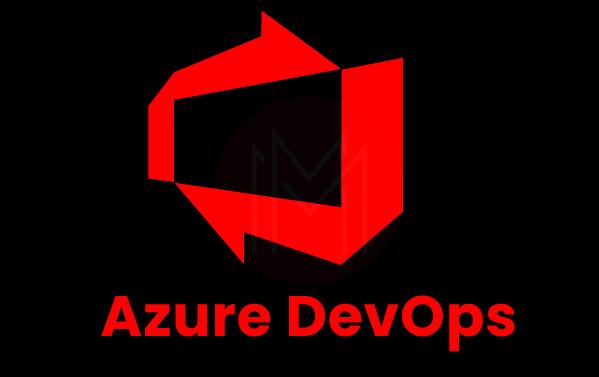
We have categorized Azure DevOps Interview Questions into 3 types, They are:
Top 10 Azure DevOps Interview Questions
Azure DevOps Interview Questions And Answers For Freshers
1. What do you mean by Azure boards?
This Azure DevOps service is used for managing the project of software. The various abilities offered by it include reporting, dashboards, kanban, and scrums. Backlogs, queries, dashboards, sprints, and work items are the essential features of Azure boards.
2. What do you mean by Azure pipelines?
It is considered one of the most important cloud services. With the help of Azure pipelines, the project codes can be built as well as tested automatically. With the aid of major languages and the kind of projects, it does its work productively. The project code is shared with other customers as well by this feature.

3. What do you mean by Azure Repos?
This system version control is used for managing code and various versions by the use of the lifecycle of the development. It can also track the multiple changes in the code via different teams. The list of changes then can be used for coordination and collaboration between the teams in the future. Centralized version control, as well as distributed version control, is its essential features. An example of distributed version control can be Git. And an example of centralized version control is TFVC.
4. What do you mean by Azure artifacts?
Azure artifact is an extension making it easy to install, discover, and publish the packages such as npm, NuGet, and Maven in Azure DevOps. The package management becomes a smooth process in the existing workflows because of its deep integration with other hubs such as Build.
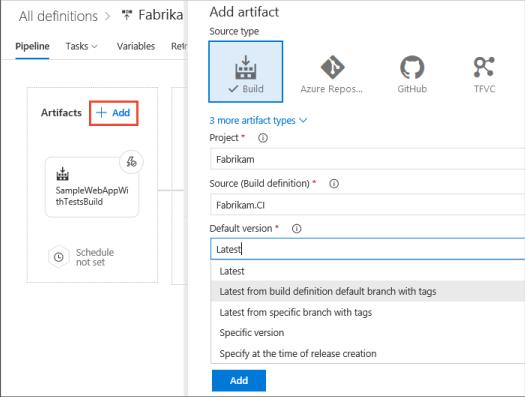
5. What do you mean by Azure test plans?
This Azure DevOps service is used for managing all the test solutions. Exploratory testing, manual planned testing, and customer testing are all provided under this one service. Testing exploration, as well as the stakeholders' feedback storage, is maintained by its extensive browser. Testing explorations and manuals are essential techniques for product development because they are considered the reason for testing automation.
| If you would like to enrich your career in Azure DevOps, then Enrol Our "Azure DevOps Training". This course will help you to achieve excellence in this domain. |
6. What do you mean by Multi-stage pipeline?
CI, CD, or both are allowed by a multi-stage pipeline in a single YAML pipeline code. Being easy to maintain and easy to check the current stage of our deployment is among the many benefits provided by it.
7. List some benefits of Azure pipelines.
Some of the benefits provided by Azure pipelines are-
- Integration with GitHub
- Integration with Azure deployments
- The ability to work with any platform or language
- The ability to deploy and work on multiple targets at the same time
- Configuration of open-source projects
- Build on Windows, Linux, and Mac machines
8. What is meant by the pull requests in Azure DevOps Repos?
Pull requests are used for reviewing as well as merging codes to a Git project. Pull requests enable the team to review the code and also provide feedback on it. Either feature or topic branch, along with a fork, can be the source of pull requests.
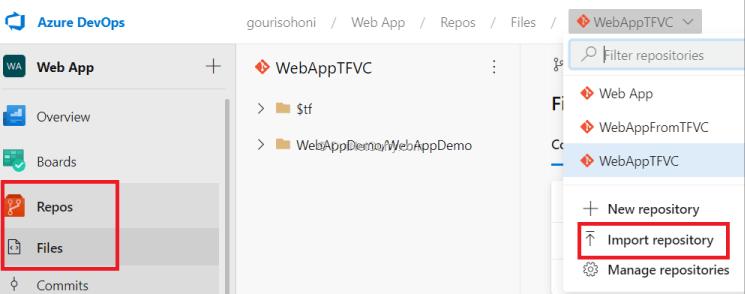
9. Explain Forks in Azure DevOps.
We can separate the risky, confidential, and experimental changes from our original codebase with the help of forks. A fork is a whole new copy of code collections that include commits, branches, and files. A fork seems like a repository that has been cloned and pushed to a new and empty repository. The fork files and branches can't be shared with the original codebase once a fork is created. But a pull request can carry them along.
10. List some of the features of Memcached.
A wide range of features are offered by Memcached, such as-
- Callbacks
- CAS tokens
- Igninary
- GetDelayed
- Binary protocol
11. Mention why Azure boards should be used?
Azure boards should be used because of the following reasons-
- Interactive visual tools are provided
- Scaling makes it easy to begin as levels rise
- In-built tools enable social communication
- Extensibility is provided
- Easy to customize
- Flexibility and easy storage of collected data
- Can be begun at no cost
- Identifying the needs and notifying the changes is easy
- The progress and status are observed in the dashboard.
12. Differentiate between Jira and Azure DevOps.
Atlassian Jira is also a well-known application life cycle management (ALM) tool. It is especially liked by the agile teams. Originally it was a bug tracking tool. But now, it has grown into a more comprehensive tool that now contains many software development and management tools. The main intention of this tool is to keep things on track. Azure DevOps, on the other hand, not only tracks but extends to building and development as well.
| Want to Know More About Jira, Visit "Jira Tutorial". |
13. Why is Selenium used in DevOps?
The use of Selenium in DevOps is for continuous testing. Its specializations include functional and regression testing.
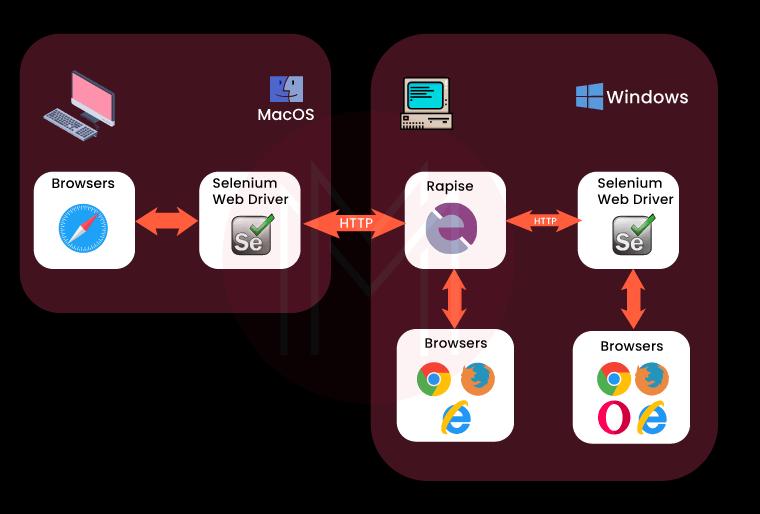
14. What is meant by roles?
Roles are the type of servers that help us towards common aim achievement. These are managed as well as loaded as virtual machines.
The three types of roles Azure provides are:
- Worker Role
- Web role
- VM role
15. What different types of backlogs and board options are available in Azure boards?
Three classes of backlogs are available to manage the work:
- Product
- Portfolio
- Sprint
And two types of boards are available-
- Kanban
- Taskboards

Azure DevOps Interview Questions And Answers For Experienced
1. Tell us something about fault domains.
They are the logical hardware groups that can share the same power source as well as network. They are used for racking the data centers on-premise. These fault domains get automatically distributed by the Azure platform when VMs are designed using available sets. This approach limits network outages, physical hardware failures, etc.
2. Tell us something about the Update domains feature.
They are the logical hardware groups that can be rebooted as well as maintained at the same time. These updated domains get automatically distributed when the VMs are designed using available sets. This ensures our application instance, as well as the running of the Azure platform, is under periodic maintenance. Only a single order of updates can be rebooted at a time.
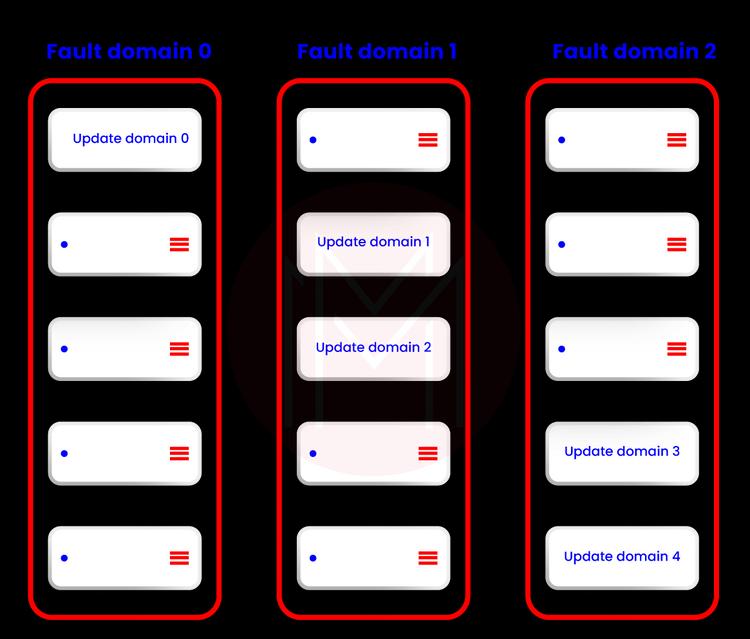
3. How can Azure Ad applications be used?
A secured and simple way is provided to select and connect with web applications by this feature. The same as the SaaS apps access can also be accessed in the Azure. It doesn't require a VPN to change the infrastructure of the network.
4. What is VNet?
The rendering of our cloud network refers to the VNet. Our launched cloud instances get isolated from the remaining resources with the help of VNet.
5. What is meant by system capabilities and user capabilities in the Azure pipeline?
The self-hosted agent contains a set of capabilities that defines the scope of various capabilities. The name-value pairs are referred to as capabilities. They are called system capabilities when they get discovered automatically by the agent software. On the other hand, they are called user capabilities when they are defined by us. System capabilities such as operating system name, machine name, and other installed software are detected by the agent software.
6. What is the azure cli command used to run the pipeline?
Az pipelines run [-branch]
[-commit-id]
[-folder-path]
[-id]
[-name]
[-open]
[-org]
[-project]
[-variables]7. Elaborate self-hosted agent in Azure pipeline.
Self-hosted agents allow us to set up as well as management jobs on our own. We opt for self-hosted agents when we want more access to installing dependent software as per our needs and deployments. Also, the speed can be boosted by the persistence of machine-level caches and configuration from run to run.
| Related Articles:"Azure SaaS" |
8. Elaborate Microsoft-hosted agents in the Azure pipeline.
It is the by default Microsoft agents that get the jobs executed. From assigning the resources to installing and maintaining, everything gets done when we opt for this Microsoft-hosted agent.
9. What is a Dogpile effect? How can it be prevented?
- The period after the cache expires and several requests have been made on the website from the client refer to the Dogpile effect.
- The simplest technique to avoid this effect is a semaphore lock. The semaphore lock generates a new value after the cache expires.
10. Explain the use of an active directory in Azure.
It is used for access management. It helps in enabling access to the employees to particular products and services of our networks. Some major examples include Salesforce.com and Twitter. Application-built support in galleries is provided by this active directory.
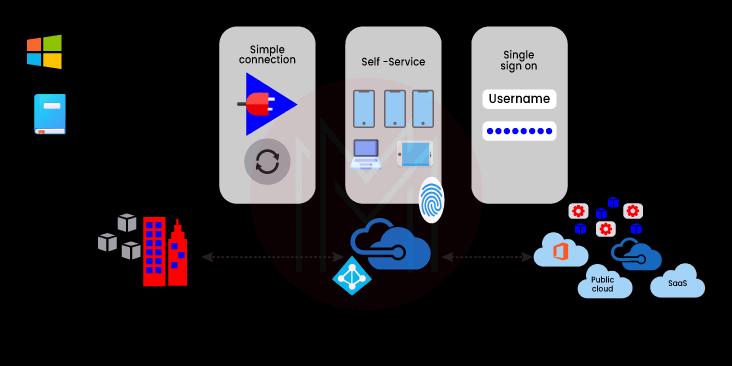
11. Elaborate Azure service fabric.
This distributed systems platform makes it simple for the package, scalable management, deployment, and microservices reliability. Development and management of the applications of the cloud can also be done by this. Hence the developers can pay more attention to the critical implementation jobs.
12. Tell us about the Azure Redis cache.
It is an open-source data structure. It works as a database and cache. Azure Redis cache is made based on the famous Redis cache of open source. Secured access from azure applications is provided with the help of this feature. The structure of data which are like strings, sets, and hashes along with queries, is maintained by this.
13. What is meant by containers? Which containers are supported by azure DevOps?
To package the software code, its dependencies, and its configurations into a single object or unit, containers are used. Multiple containers can be there working and sharing the operating system on the same machine. This enables fast, consistent, and reliable deployments. The following containers are supported by azure DevOps:
- Asp.Net with containers
- Docker
- Azure service fabric app along with docker support
- Azure Kubernetes services
Related Article: DevOps Vs SysOps
14. Explain the function of Scrum master in azure boards.
Scrum master is always on the lookout to remove all the hindrances, resolve impediments, and other blocking issues arising during a sprint. They are continually ensuring the improvement of the team. They can be called part team members, part cheerleaders, and part coaches.
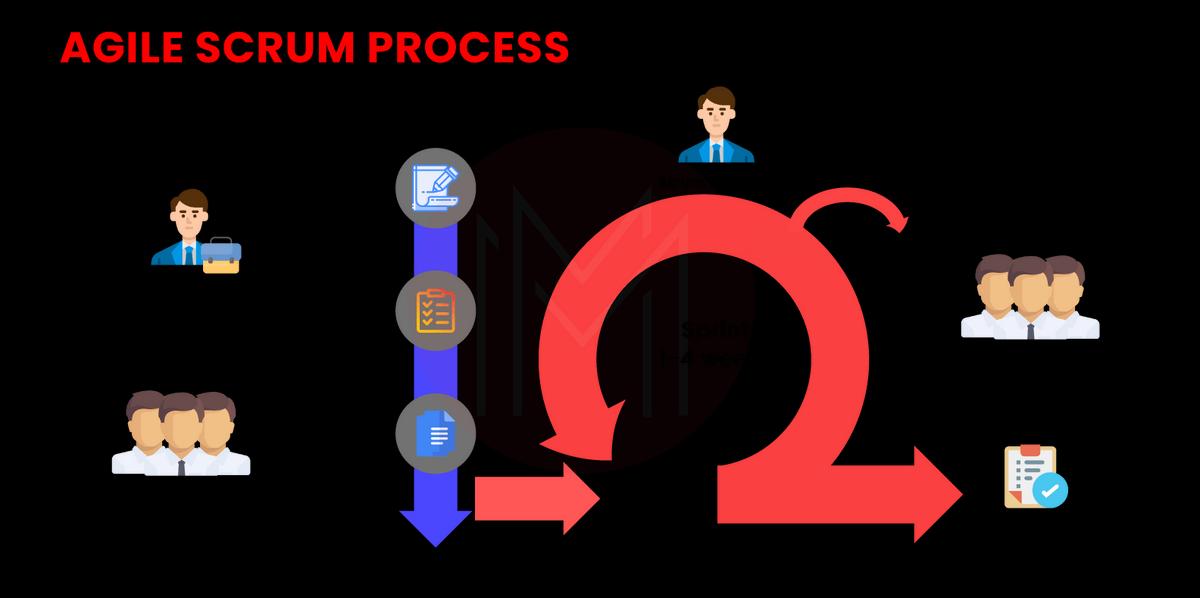
15. How can a Git repository be created in Azure DevOps?
A Git repository can be created by following the given steps:
- Open DevOps
- Choose the respective project
- Click on Repos
- Click on Files from Repos
- Click on repositories
- Click on the "New repository" option from the dropdown menu
- Choose repository type as Git in the panel appeared.
- Give the repository a name
- The "Add a README" checkbox can be unchecked. Otherwise, a readme.txt file will be added.
- Now, click on create button
(The repository will get selected by default once it is created)
Now, given below are the Top 10 FAQs about Azure DevOps.
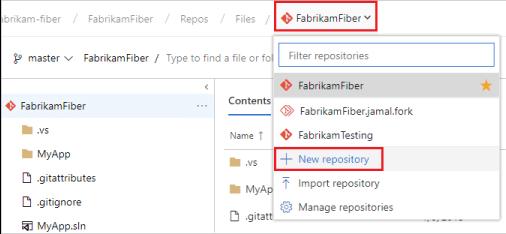
Frequently Asked Azure DevOps Interview Questions
1.Mention some of the alternatives to azure DevOps?
Some of the main alternatives to azure DevOps are GitHub, Jenkins, GitLab, Jira, TeamCity, Bitbucket, Jira, Octopus Deploy, and Amazon Web Services.
2. Mention the advantages of using Azure DevOps.
The main advantages of using azure DevOps are:
- Higher efficiency
- Customer satisfaction
- Speedier code deployment in the market via ceaseless integration and delivery
- More collaboration between the operation and development teams.
- Incessant improvements as well as reduced failures
- Transparency between different teams
- Speedier operational support
- Better adaptation
- Robust infrastructure as well as IT performance
3. Which service is used for managing Azure resources?
Various services, such as deployment, management, etc., are handled by the Azure Resource Manager.
4. Differentiate between Azure DevOps server and azure DevOps services.
Azure DevOps Server is an on-premise platform based on a SQL server. Generally, enterprises opt for an on-premise platform whenever there is a need to access SQL server reporting services integrated with azure DevOps tools and data.
Azure DevOps services, on the other hand, are the cloud services of Microsoft Azure. It offers highly reliable as well as scalable globally available services.
5. What are the main components of Azure DevOps?
The main components of azure DevOps are given below:
- Azure Boards- work item tracking, agile planning, reporting, and visualization tool
- Azure Repos- cloud-hosted private git Repos are provided
- Azure pipelines- a language and cloud-agnostic CD/CI platform supporting containers or Kubernetes
- Azure test plans- a planned and integrated testing solution is provided
- Azure artifacts- integrated package management supporting npm, Maven, NuGet, and Python package feeds from private or public sources.
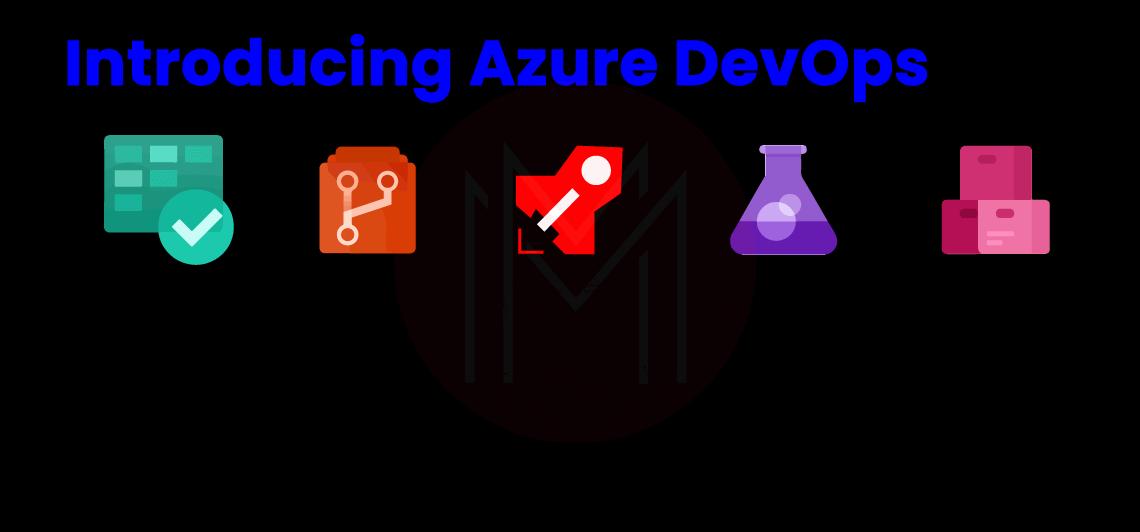
6. Elaborate on the job role of Azure DevOps engineer.
An Azure DevOps engineer is responsible for designing and implementing a scalable, strong, realistic, and practical cloud solution that would work for the clients.
7. Which web applications can be deployed with Azure?
The web applications given below can be deployed with Azure:
- PHP
- ASP.NET
- WCF
8. Mention different ways for connecting with a project in Azure DevOps.
Following different ways can be followed to connect to a project:
- Integrating with Team Explorer or Visual studio.
- Visual studio code
- Through web portal
- Eclipse/Team explorer
- Intellij with the Azure DevOps services
- Android studio with the Azure DevOps services
9. Elaborate on the projects of Azure DevOps.
To gain experience, the projects of azure DevOps are very important. This helps in the Git repository and code existence for designing the ceaseless delivery as well as integration pipelines of Azure DevOps.
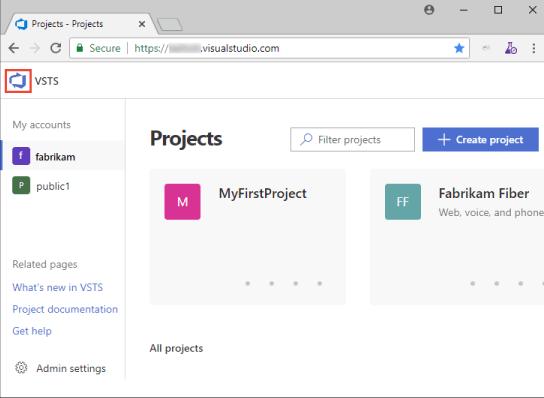
10. Briefly explain continuous monitoring.
DevOps and agile are used simultaneously to develop the process through expectations and adoption. We can constantly monitor the progress, infatuation, and process visualization. And we will be provided with quick alerts in real-time. We can select the process as per our requirement through data analysis. Hence continuous monitoring is of great help.
Conclusion
Azure DevOps is an easy to learn as well as a simple technology. But the solutions provided by it to automate workflow are highly efficient. This makes it the next big thing in the IT sector with a vast pool of opportunities. We are wrapping the article here and wishing you luck, hoping that the questions provided above will help you in your interview.
 On-Job Support Service
On-Job Support Service
Online Work Support for your on-job roles.

Our work-support plans provide precise options as per your project tasks. Whether you are a newbie or an experienced professional seeking assistance in completing project tasks, we are here with the following plans to meet your custom needs:
- Pay Per Hour
- Pay Per Week
- Monthly
| Name | Dates | |
|---|---|---|
| Azure DevOps Training | Dec 16 to Dec 31 | View Details |
| Azure DevOps Training | Dec 20 to Jan 04 | View Details |
| Azure DevOps Training | Dec 23 to Jan 07 | View Details |
| Azure DevOps Training | Dec 27 to Jan 11 | View Details |
















